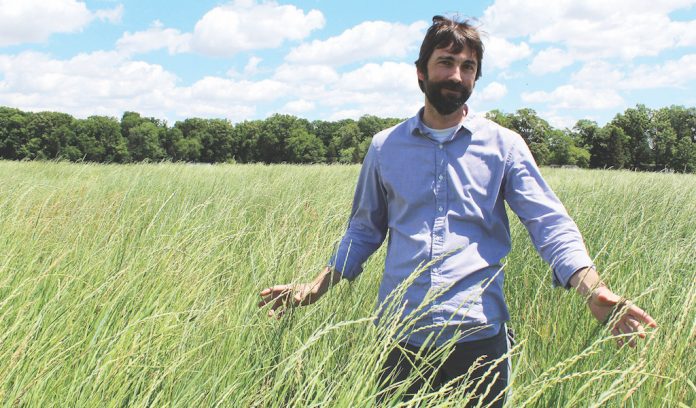WOOSTER, Ohio — Farmers who are looking for an alternative to corn and soybeans — and a crop that grows back each year — might want to consider the benefits of growing a perennial wheat-like plant known as “Kernza.”
This is the trademark name for a perennial crop that can be harvested for both its grain and forage qualities, and it grows back for at least three or four seasons.
Known as an “intermediate wheat grass,” Kernza was developed by The Land Institute, a conservation-minded organization based in Kansas.
Researchers across the country have been trying to develop new varieties of Kernza that do well in each state. At Ohio State University, research is being led by Steve Culman, a soil fertility specialist and assistant professor.
Culman said Kernza has the potential to be “transformative in terms of the potential for a grain system to provide soil and water conservation.”
More efficient
That’s because Kernza allows farmers to harvest both grain and forage without the need for replanting each year. With less soil disturbance, there’s more opportunity for root growth and development, and more ground cover to hold nutrients in place.

The grain heads can yield more grain than wheat, according to The Land Institute, but the seeds are typically about one-fifth the size. Researchers like Culman are trying to develop new varieties that produce larger seeds, and higher yields.
He said grain yields can range from 500-1,000 pounds per acre, depending on the weather and the growing season. The crop is typically planted in the fall, with a wheat-style drill and is harvested with a combine.
Forage potential
Unlike wheat, the crop can usually be harvested a couple times a year, but usually just once for grain. After harvest, the chaff can be baled and used as a forage, or the crop can be live-foraged by allowing livestock to enter the growing crop.
The grain can be used for baking, and for mixing with other flours. It can also be used by breweries and distilleries, or consumed by itself.
Culman said it has a “rich, nutty flavor.”
A big factor is how the grain is milled. Unlike wheat, Kernza usually has to be dehulled through a separate machine. Kernza can be milled and consumed with the hull attached, but it definitely produces a more brand-rich product, Culman said.
He said there are only about 10-15 acres of Kernza currently being grown in Ohio, but he sees a bright future for the crop as more farmers learn about the benefits.
Lee DeHaan, the lead Kernza scientist at The Land Institute, said more farmers are interested in growing the crop each year, but he wants to make sure the varieties are fully developed before they become commercialized.
“I’ve been deliberately holding back the expansion because we’re working on expanding the grain yield and seed size in order to make it a good crop,” he said.
On the market
But Kernza is already in the marketplace — and is being made into foods and beers.
This spring, the General Mills Co. announced a partnerships with The Land Institute and the University of Minnesota to help commercialize Kernza, and use it in some of its cereal and snack products.
“It’s rare that you find something like this that, if you work at it, has so many environmental benefits associated with it. So that’s one of the reasons we’re excited about this,” Jerry Lynch, chief sustainability officer for Golden Valley-based General Mills, told The Associated Press.
General Mills also announced it will also donate $500,000 to the University of Minnesota to support advanced research into breeding, yield and growth practices, milling and marketing the grain, so that it succeeds in the long term, Lynch said.
Culman doesn’t expect Kernza to compete head-to-head with conventional crops for a while — partly because it doesn’t yield as much — but it provides farmers another option.
“If you don’t have any use for forage, this is not a system you want to invest in,” Culman said.
Farm research
This is his third year researching Kernza at Ohio State, and he’s hoping to continue learning more about the crop — not only from his research plots, but from farmers.
“I’m a firm believer of information flowing from researchers to growers and then back the other way, too,” he said. “As a scientist, I learn a lot from conversations with growers and doing on-farm research.”
Researchers are also evaluating Kernza in Minnesota, New York, Wisconsin, Kansas, Colorado and elsewhere. At the end of this year, Culman said they are planning to publish their three years of results.
The crop probably won’t work for everyone, but some farmers could be pleasantly surprised by the benefits.
“We’d hope that it would be a system that would provide flexibility and options,” he said.











I live on the high, dry plains in eastern Colorado. I have 30 acres that I would like to put into a semi- perennial like Kernza. Any possibilities?